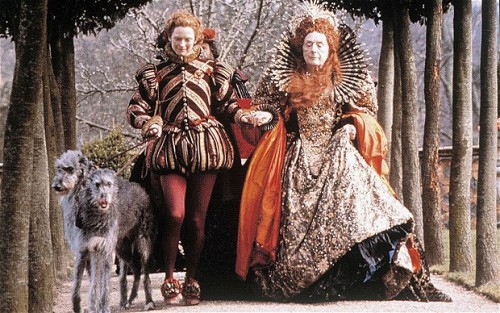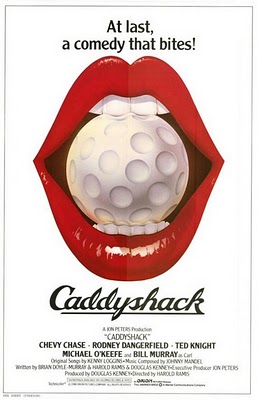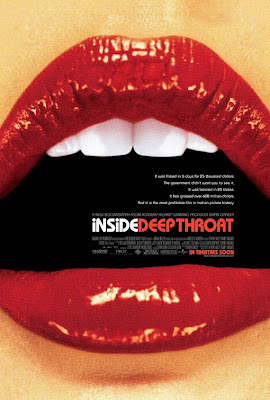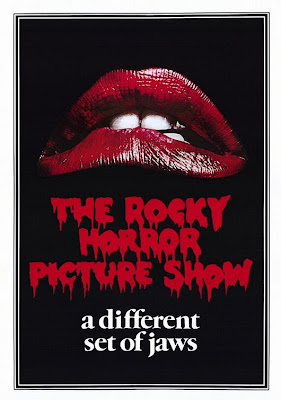This is a guest post by Ian Boucher.
Drama is an incredible thing, and it is universal. It provides humans with opportunities to experience a myriad of journeys within themselves through the journeys of others. These journeys can be serious or comedic, grounded or nonsensical, yet they all have the potential to demonstrate the reflections and rabbit holes of humanity.
Unfortunately, in Western culture, due to the now largely industrial nature of storytelling, it’s all too easy to forget about that potential. The film industry represents one of the largest sets of conveyor belts, delivering the same handfuls of story and character elements over and over again in its scramble to stay ahead above the cacophony of story products. Even many of the best movies, whether produced by a studio or independently, largely use archetypes, and many film studios pour the majority of their efforts into blockbuster films, which are generally even simpler in nature.
These are not completely new developments. Rather, they are a result of Western culture’s evolution over thousands of years. The majority of drama has always been produced as entertainment for commercial purposes, and our ideological journey, our cumulative human story explored over thousands of years, has simultaneously been going in wide thematic circles. These developments have also created inherent expectations for the films we watch.
This article, however, isn’t about originality. This is about potential.
I’m a student of the field of communication. I embrace the fact that the perceptions of humanity evolve like a meandering brook, naturally and gradually through time. We do make progress. It just takes us a while. Also, as a film scholar, I understand and love familiarity as well as freshness.
As a Padawan librarian, though, I can’t help but think that we can be more self-aware about how we go about all of this—that, like any activity, the results could be much better if more of the parties involved were conscious about what they were doing, whether creatively or administratively.
Despite our limited options and scope in the world of movies, many cinematic characters get their fair share of explorative opportunities. But most of these characters, as many of us know, are male, right down to who we see standing in the frame. This is why for me, the core question of potential is most intricately entwined with female characters in popular movies. Although there have been many great female roles out there, there is much to do nonetheless, and this in turn reminds me of the progress that needs to be made for both sexes and all gender identities.
Take the recent trailer for Marvel’s Guardians of the Galaxy, for instance. Like many of our outings in the Marvel Cinematic Universe so far, the trailer told me that what I need to know about Zoe Saldana’s character Gamora—one of two females I noticed in the trailer—is that she can fight and that she might be a romantic interest, in this case for Chris Pratt’s Star-Lord.
Guardians of the Galaxy will be an action movie, and there are a lot of humans out there who love violence and sex, but female characters are very much utilized within those two categories for male characters to experience more often than vice versa, or focusing on the internal experiences of those involved. After all, Hollywood wants its movies to appeal to the most people possible, and this is what has largely worked so far. It is well known that the film industry is very averse to risk-taking.
To make female characters appear more dimensional in recent years, the violent part has been more prominently emphasized, marketed to us as something that makes current female characters different. Hollywood actresses in interviews across the board cite “toughness” as the primary character trait for their roles, even when their roles hold more than that. These roles and the statements about them very much reinforce the larger culture.
And yet, not only are humans three dimensional, but they also like variety, whether they agree with it or not. Just look at the ratings for any national news channel in the United States, where “controversy” abounds.
This is why, when I think about all of this, two movies especially come to mind. For me, they represent the tip of the iceberg where female characters are concerned—the hint of humanity’s dramatic potential. They vividly remind me both of the strength of expectations and the excitement of what movies can work toward. Each film occupies a vastly different place on the filmmaking spectrum—one on the fringes and the other a blockbuster, one a drama and the other a comedy, one a critical success and the other more on the infamous side, but for a few moments, they are inextricably connected, and their different places on the spectrum is precisely the point. They balance each other out.
These movies are Sally Potter’s Orlando (1992) and Steven Spielberg’s Hook (1991).
Stay with me here.
Both movies starkly demonstrate just how far we have to go with our roles, for they each contain a character that transcends the idea of gender, and I don’t mean because these characters are women playing men. Changing gender and sex in the arts is nothing new. The characters I am about to explore represent a great deal of potential for both women and men in storytelling, because they are just about humans playing humans. They both represent the further possibilities of that journey that we are all always taking, and, more inspiringly, do not fall into convention in the process. Additionally, neither is about gimmick, novelty, or even agenda. They are just drama and comedy.
They each fulfill the promise of characters in cinema.
“We are joined, we are one with the human face.”
Orlando is based on the Virginia Woolf novel Orlando: A Biography. The film follows the experiences of a young man named Orlando for about 200 years until one day, he is a woman, and lives out the next 200 years as such. The role of Orlando—for it is one character—is played with perfection by Tilda Swinton, and the movie is strikingly superb from beginning to end in every possible filmmaking dimension, both as a work of art and in legitimate entertainment value. It somehow manages to be abstract and full of reality at the same time, and expertly addresses numerous complicated themes, making them look incredibly simple to explore. This film profoundly captures Orlando’s vast and variegated experience of life as a man and a woman in dramatic and comedic moments as Orlando searches for the understanding of it all along many nuances of human connection. The movie is of course not perfect, but it is moviemaking at its best.
Orlando is a film that can, and has, been viewed in many different ways, especially and understandably so about sex and gender roles, and especially on the feminine side of things. But I see this movie as being about more than sex or gender, whether female or male. Although the film is certainly about all of that, I see it more as being about humanity and the larger human experience. The character of Orlando brings that home in spades, and Tilda Swinton brings it out wonderfully.
On one hand, Orlando certainly is subjected to new injustices from society when she becomes a woman. But although Orlando may finish the film as a woman (with a companion), who is to say that she (or her companion) will stay that way? The film visits the journey of one person experiencing and exploring the whole spectrum of humanity through changing perspectives. Orlando herself says it all when she first becomes a woman: “Same person. No difference at all. Just a different sex.”
Orlando and the movie itself are grand poetry that push our journey forward. They take what Marilyn Monroe’s Roslyn Taber in The Misfits (1961) started saying over half a century ago and bring it to the next level. Both Roslyn and Orlando are indeed misfits, and Orlando hits the humanity that Roslyn is still trying to tell us all about. Orlando does so by being able to transcend sex, gender, mortality, and time, so that we can look at life with a greater amount of understanding.
Orlando is about destiny for men as much as it is for women. The last shot is the most striking of all, because it forces us to face that truth and leave the theater with it. It allows us to look past the lines of gender and just see a human as an adapting organism. As the music says at the end of the film, Orlando really does come “across the divide.” By the end of the film, she is more than male or female. We can move productively toward the future and forget the different kinds of cultural shackles that keep us all down.
It’s so full of possibility.
And yet! Not all movies can or should be so deep all the time. Do all female roles have to so completely change our views?
That’s why my next point in this article is Hook.
“NOT THE BOO BOX!”
One of the elements of Steven Spielberg’s Hook that has proven to best stand the test of time is Glenn Close’s cameo as Gutless the Pirate. (Let the discussion ensue if you just realized this!) Regardless of where many opinions fall when it comes to Hook as a whole, this scene on its own is nevertheless widely regarded as comedy gold.
It is the scene in which we first get to see Captain Hook in the flesh. The “Bad Barracuda,” as he is sometimes evidently known, zeroes in on the one person who doubted his plan to bring Peter Pan’s children back to Neverland. Just one pirate. This pirate is Glenn Close’s Gutless, who seems to hold some kind of shockingly defiant, petty disdain for Captain Hook. Almost immediately after displaying this, Gutless hilariously breaks down into tears, and is subsequently thrown into the dreaded “Boo Box,” or for those uninitiated to Neverland, a treasure chest where they drop scorpions on you.
This is not a scene about the novelty of a woman playing a man, because, before the Internet anyway, most people didn’t even know that Gutless was a woman playing a man. I still see new articles popping up all the time celebrating this realization—each of these realizations not only has clear respect for it, but also enthusiasm. It’s not because Close’s role is about a statement, nor is it because of an agenda on anyone’s part. Gutless’ scene doesn’t particularly mean anything—although I’m sure people can come up with some great analyses for it. It’s just a funny scene. The character is hilarious. Glenn Close’s performance is hilarious. The term “Boo Box” is hilarious. It all just ties together into good comedy.
The grand majority of people love this scene, and they love it even more when they realize it’s Glenn Close. It’s a good actor bringing a character to life that supports and augments the rest of the movie’s sense of humor.
And I know there is more room for this kind of thing in other movies, regardless of genre. Why shouldn’t anybody be able to play any kind of part? (There’s a mouthful.) That is the journey.
Reminders and Expectations
Reminders can go a long way. Business and creativity can move hand in hand. But regardless of what movies do or the power they hold in cultures around the world, what it all comes down to is the stories we tell each other—what we tell each other is what counts.
Orlando and Hook are wonderful reminders that so very little has been explored in storytelling. They both can remind us of the journey that not only women, but humans, can take. Despite what all of the prophesies in movies may tell us, none of us need be, as Orlando put it, “trapped by destiny.” The possibilities for looking at each other as just people are endless.
So where are we now? Where do we want our culture to be? What stories do we want to tell ourselves? What do we want to expect? What do we want to be aware of?
I’m going to go out on a limb here, but it seems to me that the gutlessness of Western culture will only serve to keep us inside the box.
Eh???
We all know the journeys are still out there. Whether you’re a filmmaker or in the audience, why not do something about it today?
What stories remind you?
Trained in communication, film, and television theory and production, Ian Boucher is developing his interests in library science with a focus on information literacy. He enjoys reading, writing, watching movies, exploring the outdoors, and endlessly contemplating the psyches of comic book characters. Feel free to get in touch with him anytime on Twitter (https://twitter.com/Ian_Boucher) — he can talk about this stuff all day!

























